Panel
Inverter

Reduce your bills

Add lasting value to your home

Reduce your carbon footprint
Panel
Inverter
What if your pool, far from being an expense, became the starting point of your energy independence?
At Poolstar, our ambition is simple: to make well-being accessible without compromising the future. We act to reduce the ecological impact of the pool industry by putting innovation at the service of energy transition.
ApolloHub is more than just a solar kit: it’s a new way of thinking about the pool—eco-smart, efficient, and durable. Designed for pools up to 80 m³, it locally produces the energy required for your equipment (pump, heat pump, chlorinator...), helping you save money year after year.
It’s a tangible first step toward a more autonomous pool and home, as the excess energy can power your other household needs. With up to 14,430 kWh generated per year, you save around €3,170 annually, with a payback period of under 3 years. Durable, high-performing, and easy to install, ApolloHub is your pool’s solar ally.
To further boost autonomy, our solar solution includes optional stackable battery systems (5, 10, or 15 kWh).
They allow you to store energy generated during the day for use at any time, including in the evening or at night—an ideal solution for continuous energy supply, especially for the most demanding pool equipment.
They also provide a backup solution in case of power outages.
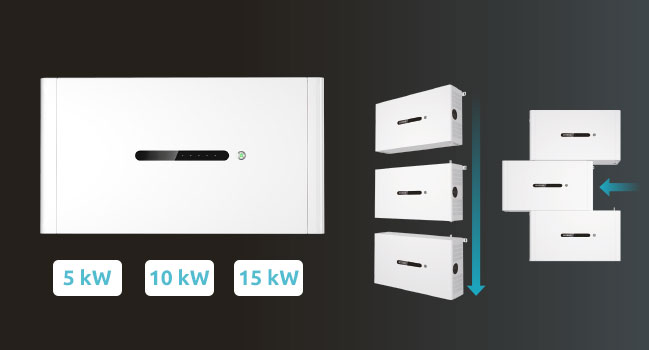
Your professional installer will guide you with our dedicated configurator! In under 2 minutes, get a tailored configuration, a clear profitability estimate, and a projection of your savings. A certified pool expert will support you every step of the way.
A fast and reliable tool to turn your solar project into reality!
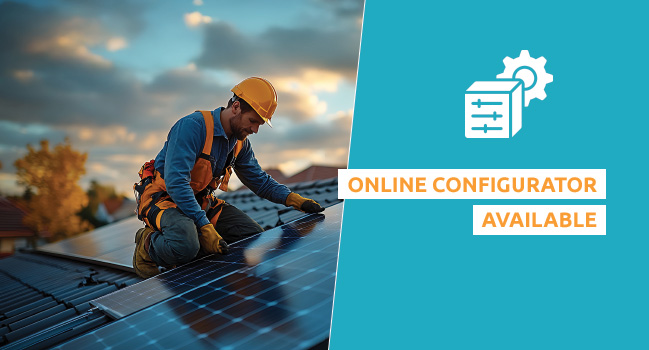
The ApolloHub 9 kWc kit operates via direct self-consumption. It produces electricity through photovoltaic panels and powers your pool’s technical equipment in real time.
The solar energy captured is converted by a compact, quiet, and efficient inverter. This electricity is used immediately to run your pump, heat pump, or chlorinator.
If your production exceeds your needs, the surplus can be injected into the public grid (subject to prior declaration). The system naturally follows summer consumption peaks.
Optionally, high-voltage 5kWh stackable batteries are available to work with the hybrid inverter. This provides a reliable and scalable solar storage solution thanks to its ultra-safe lithium iron phosphate (LFP) technology. Stackable up to 15kWh, it adapts to your present and future needs.
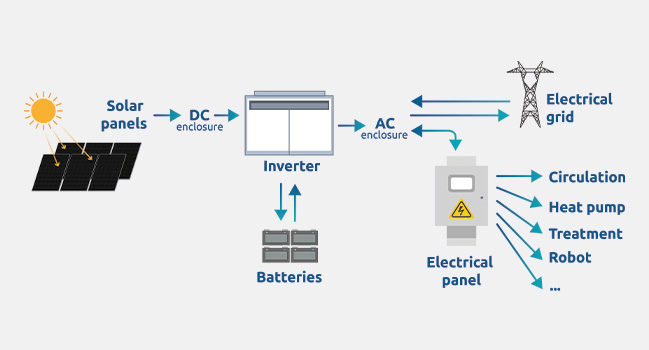
The ApolloHub 9 kWc kit includes high-efficiency photovoltaic panels, a compact and powerful inverter, and a user-friendly mounting structure. Optionally, you can add stackable batteries up to 15kWh.
The whole system is designed for direct self-consumption, powering your pool equipment in real time while following your usage peaks.
In case of surplus, energy can be injected into the grid. A scalable, reliable, and high-performing solution to take your first step toward energy independence.
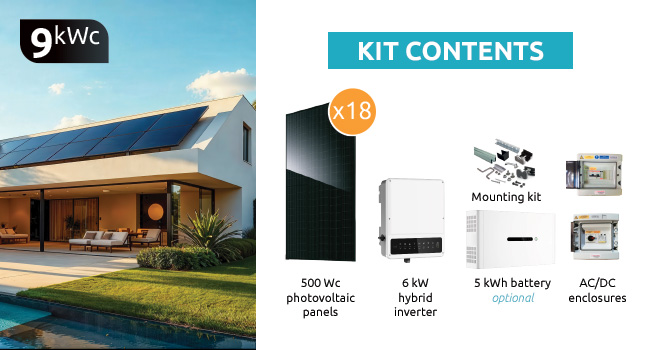
ApolloHub lets you control everything from a dedicated mobile app. Track your production, check your savings, and monitor your system remotely.
The interface is intuitive and accessible via smartphone, tablet, or computer. Connected via Wi-Fi, Ethernet, or Bluetooth, it also alerts you in case of a power cut or anomaly.
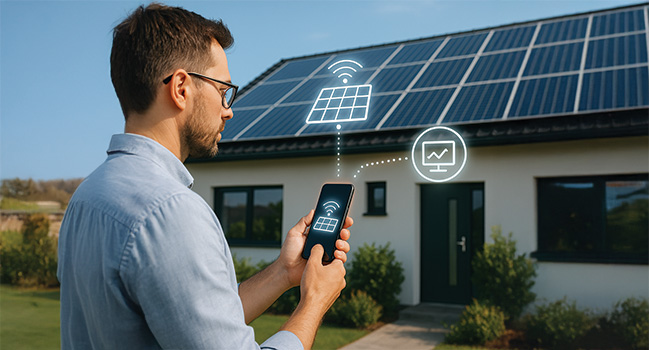
With estimated production between 10,200 and 14,430 kWh per year depending on your location, ApolloHub can save you up to €3,170 annually—meaning your equipment pays for itself in just 3 years.
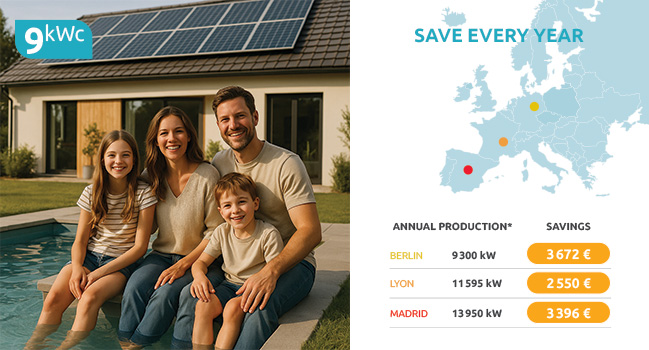
| Solar Panel | |
|---|---|
| Cell Type | Mono |
| Weight | 27.3 kg |
| Dimensions | 1953 × 1134 × 30 mm |
| Cable Section | 4 mm² (12 AWG) |
| Number of Cells | 120 (6×20) |
| Junction Box | IP68, 3 diodes |
| Connector | MC4-EVO2A |
| Cable Length | 1200 mm |
| Glass Thickness | 2 mm / 2 mm |
| Max Power (Pmax) | 500 Wp |
| Efficiency | 22.6 % |
| Voc / Vmp | 45 V / 38.26 V |
| Isc / Imp | 14.05 A / 13.07 A |
| Power Tolerance | -5 W to +3 W |
| System Voltage | 1500 V DC |
| Operating Temperature | -40 °C to +85 °C |
| Front / Rear Load | 5400 Pa / 2400 Pa |
| Safety Class | Class II |
| Fire Rating | UL Type 29 / Class C |
| Inverter | |
|---|---|
| Operating Temperature | -25°C to +60°C |
| Weight | 17 kg |
| Max Efficiency | 97.6 % |
| Dimensions | 354 × 433 × 147 mm |
| Protection Rating | IP65 |
| Mounting | Wall-mounted |
| Connectivity | LAN, Wi-Fi, Bluetooth (via app) |
| Communication Protocol | Modbus-RTU / TCP |
| Compatible Battery Type | High-voltage lithium-ion |
| 3 kWp Mounting Kit | |
|---|---|
| Rail-C47 2.40m | 18 |
| End Rail Cover | 12 |
| Rail Connector | 12 |
| Terragrif® | 6 |
| End Clamp | 30 |
| Chevron Flex | 42 |
| Rail Connector Screws | 12 |
| Middle Clamp | 12 |
| Wood Screws 6x60 | 42 |
| Wood Screws 6x90 | 42 |
| Security Kit M8 | 18 |